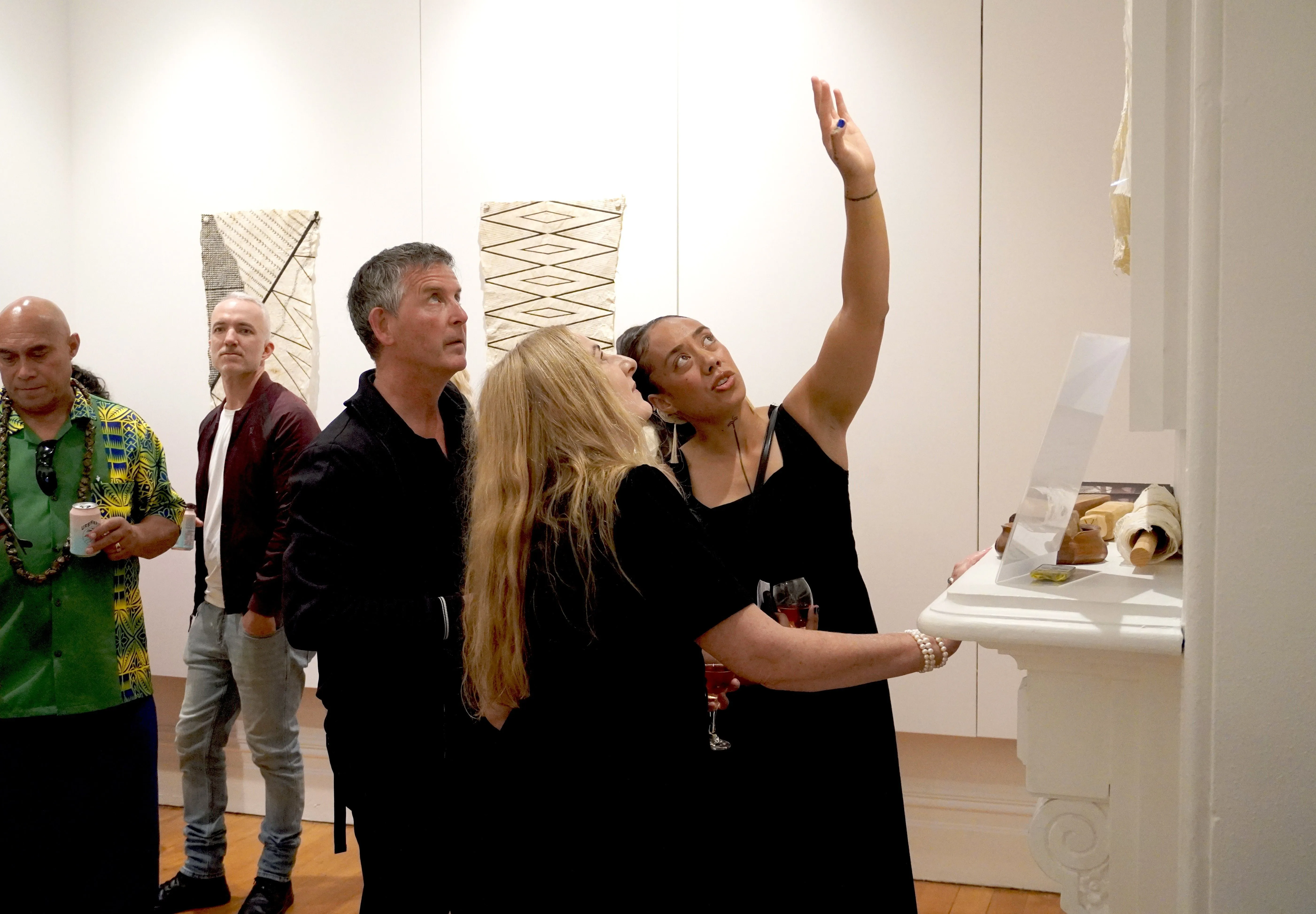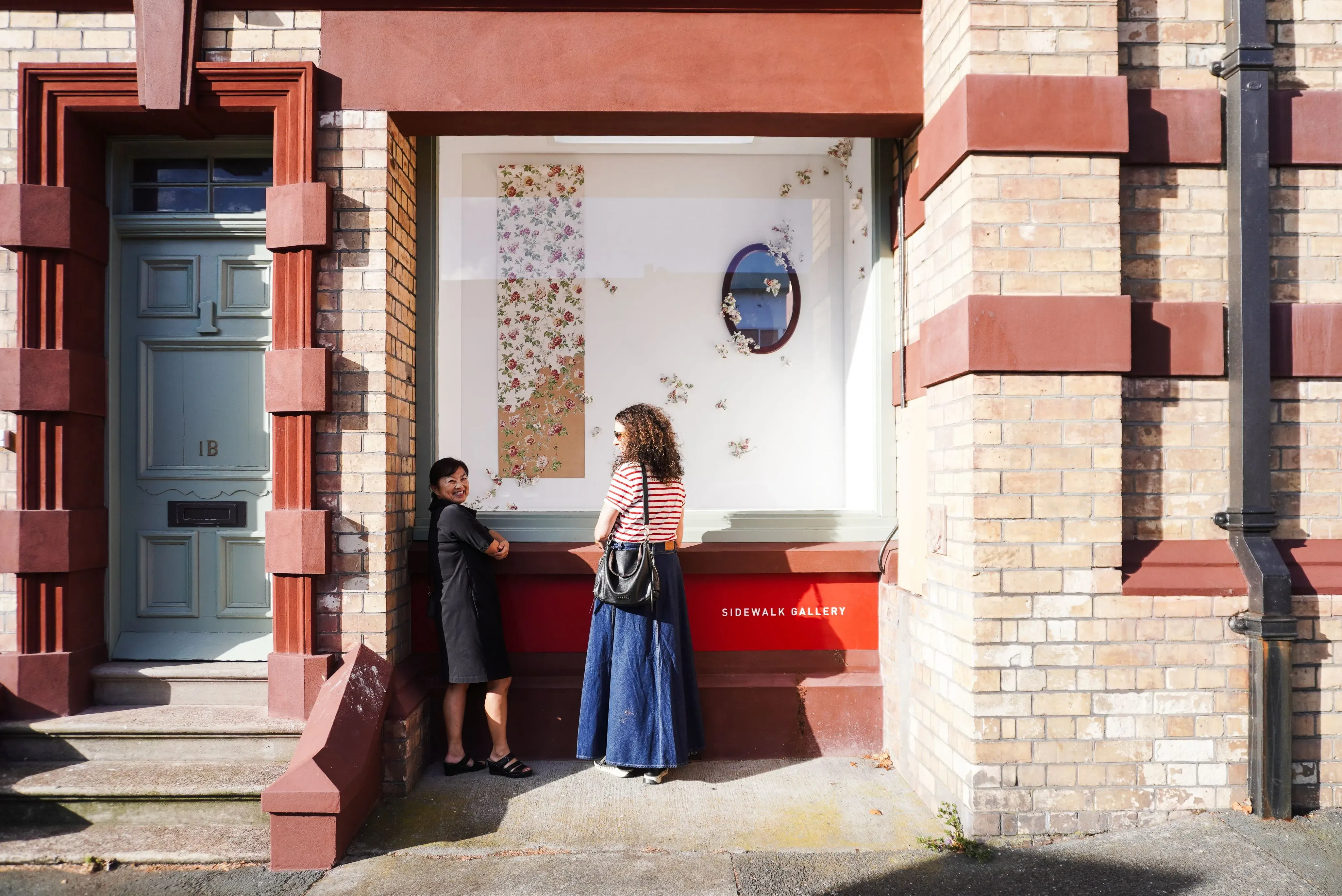CLOSING SOON: Door Open For Emerging Artists To Share Their Stories
Applications for Studio One Toi Tū’s 2026 exhibitions end this week - find out how to apply and how it's impacted those already given the chance.

Studio One Toi Tū is more than just an art studio; it’s a place where stories are shared, connections are made, and creative voices are amplified. As the doors open for proposals for the 2026 exhibition season, artists at every stage of their journey are being called on to apply and bring their visions to life.
For artists like Sahana Rahman - who exhibited her textile work for the first time in a public gallery at Studio One Toi Tū - the experience was both affirming and transformative.
“I’d been to a few shows at Studio One Toi Tū before and I really liked the atmosphere—it felt open and welcoming, which made me feel like I could put my work forward even though I was still quite early in my practice,” she says.
Rahman’s work explores the multifaceted experiences of being a South Asian woman in Aotearoa, using tactile mediums like painting and textiles to tell stories of care and cultural heritage.
“It was my first time having a solo show in a public gallery space. The staff at Studio One Toi Tū were really supportive, and the whole process felt very smooth,” she recalls.
For Florence Ulutunu, exhibiting her siapo - the Sāmoan art form of painted barkcloth - was a deeply personal journey of reclamation and cultural revival.
“My siapo journey began in 2019 when I went back to Sāmoa to learn the practice,” Ulutunu shares. “Even at the time in Sāmoa, very few people were still making siapo, so when I returned to Aotearoa, I wanted to see more of our people telling our stories.
"This exhibition was a way for me to show that siapo isn’t just an artefact—it’s a living practice that carries memories from our past, present, and future.”
Demystifying the exhibition process
The open call for 2026 is designed to make the process accessible and supportive - something both Ulutunu and Rahman believe is invaluable.
“I found it really accessible,” says Rahman. “The application process was very straightforward and the staff were always happy to answer questions or clarify things. My tip would be don’t feel like you need to have a fully polished, final idea - they’re interested in your story and what you want to explore.”
Ulutunu echoes this, emphasising the importance of focusing on your purpose and the story you want to tell.
“Before being accepted at Studio One Toi Tū, I had actually applied to multiple galleries and been rejected. At the time, I had some funding lined up that eventually fell through, which made the process even more challenging.
“The real challenge was clearly communicating my vision and helping others see the need for these stories to be told. My biggest tip would be to focus on your why - what you want to share, why it’s important to you, and who you hope it reaches.”
Studio One Toi Tū’s team is committed to ensuring the application process doesn’t become a barrier for artists.
“Too often, artists are discouraged by rigid application systems or the sense that you need a certain kind of CV to be taken seriously,” says Siobhan Connelly, Place Manager at Studio One Toi Tū.
“We’re working to remove those barriers. Whether it’s your first solo show or you’re exploring a new direction, we want artists to feel like they belong here.”
A community-centred approach
Connelly outlines the art studio's primary approach - grounded in accessibility and community.
“Studio One Toi Tū is about creating space for diverse voices, experimental ideas, and new perspectives to be seen and heard.
“We want everyone to see themselves reflected in our programme of events and exhibitions. We want to provide access to exhibition spaces, support, and guidance—offering artists a chance to present their first exhibition or to take creative risks in a supportive environment.”
For Ulutunu, this supportive environment was crucial.
“My experience at Studio One Toi Tū felt very affirming and empowering,” she says. “I felt like I had full autonomy over how I envisioned the exhibition and that the team really held space for me and the stories I was carrying.
"They didn’t try to shrink them to fit into their box, and that kind of support gave me the creative freedom to articulate what I couldn’t express through words.”
Rahman agrees. “They’re crucial, honestly,” she says of spaces like Studio One Toi Tū. “Having a space that actively prioritises emerging and underrepresented artists gives you the confidence to take that first step. It’s a really affirming environment—you don’t have to already be established, which is so important.”
Connelly recommends that artists who are considering applying to exhibit in 2026 visit the space in person if possible.
“It helps to visualise how your work will look in the space, could inspire new ideas or ways of thinking about the presentation of your work, and it’s just great if you can get a feel for the space before or while you are working on your submission.”

Celebrating diverse voices and cultural connections
The exhibitions at Studio One Toi Tū are as diverse as the artists who create them. From Rahman's tactile textile installations to Ulutunu’s siapo that carries centuries of cultural memory, each exhibition is an opportunity to connect, challenge, and celebrate.
“My exhibition was also a way for me to process grief and honour my late paternal grandma,” says Ulutunu. “The highlight for me was definitely having my family there on opening night, especially my maternal grandparents who helped raise me. I also dedicated one of the siapo to my grandma.”
For many artists, these exhibitions become a springboard - an opportunity to explore new ideas, reach new audiences, and build confidence in their creative voice.
“Even if it’s scary, it’s so worth it because you learn so much about your practice and how people respond to your work,” says Rahman.
The importance of representation
Studio One Toi Tū is deeply committed to honouring Te Tiriti o Waitangi and recognising the vital role of Māori and Pasifika creatives in shaping Aotearoa’s cultural fabric.
“We’re actively building relationships, reaching out directly to artists and communities, and making the application process more flexible and responsive,” says Connelly. “We’re listening and learning so that the process feels safe, supportive, and grounded in reciprocity.”
For Ulutunu, this commitment is essential.
“As a Pacific artist, our work carries genealogy, memory, and even grief,” she says. “I can relate to feeling exposed when sharing these kinds of stories in public spaces, but coming out of it, I feel like my willingness to be vulnerable has also given me healing and strength.
"Representation isn’t just about visibility - it’s about showing that we can bring our full selves into all spaces.”
Looking Ahead: What’s Next for Studio One Toi Tū
Studio One Toi Tū’s 2026 exhibition programme is about more than just filling gallery walls - it’s about fostering connection, creativity, and community.
“We’re particularly interested in seeing artists take creative risks, collaborate across generations or practices, and thoughtfully explore what it means to be making work in this moment,” says Connelly.
“We value kaupapa-driven practices and want to support artists whose work is inclusive, community-minded, and grounded in care.”
The team at Studio One Toi Tū is also excited to see how artists engage with the layout of their galleries.
“Our unique layout of smaller, connected gallery spaces means artists often open alongside others, creating opportunities for connection, collaboration, and shared audiences,” Connelly explains. “While each exhibition stands on its own, opening events often bring together four or five sets of guests, building energy and fostering a sense of community.”
This community-focused ethos is something Ulutunu felt deeply. “This exhibition was a celebration of our people, our culture, and our presence here in Aotearoa.”
A call to action for artists
For artists considering applying, Rahman’s advice is simple: “Just do it! Even if you’re feeling unsure, the team at Studio One Toi Tū really wants to support you. And there’s so much to gain from just putting your ideas out there.”
Ulutunu echoes this sentiment. “For me, once I reconnected back to my why, everything else became clearer,” she says. “It became less about seeking validation as an artist and more about honouring the stories I wanted to share.”
Studio One Toi Tū’s invitation is clear: if you have a story to tell, a vision to share, or an idea that’s still taking shape, this is your chance.
“We love seeing work that reflects the diverse voices and experiences of Tāmaki Makaurau,” says Connelly. “Whether that’s through language, storytelling, medium or approach, we welcome proposals that celebrate this diversity in meaningful and innovative ways.”
Experience the space
From hand-built ceramics to collaborative installations and textile works that carry centuries of cultural memory, Studio One Toi Tū is a space where art, culture, and community come together. Visit the exhibitions at 1 Ponsonby Road and see how artists are weaving their stories into the city’s creative fabric.
Written in partnership with Studio One Toi Tū - Find out more and apply to be part of the 2026 exhibition program here. Applications close 29 June 2025.
(Main image: Florence Ulutunu shares stories of her siapo practice with visitors at the opening night of her exhibition in 2025. Works pictured: Pūlotu (dedicated to the artist's beloved nana), and Itū Lua (right). Photo: Supplied.)